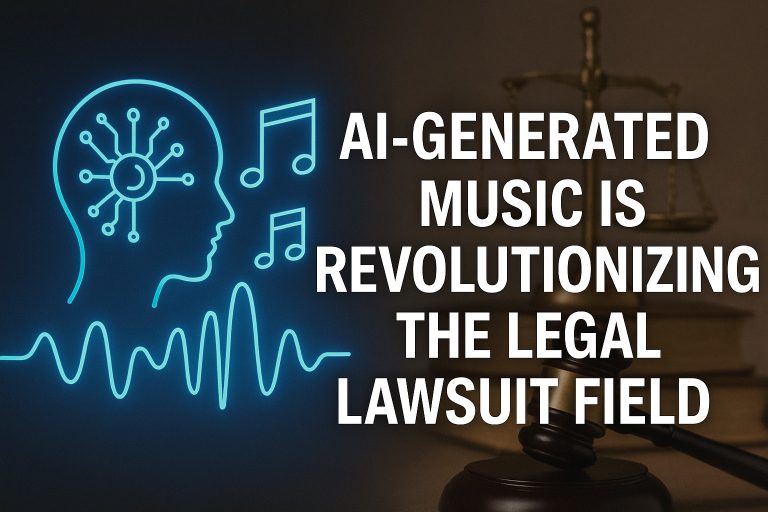The digital age has fundamentally transformed how we create, share, and protect intellectual property. From music streaming to AI-generated content, the internet has opened new doors for innovation while simultaneously presenting complex challenges for legal systems.
Intellectual property (IP) laws have had to evolve to keep pace with the rapid changes brought about by technology. As creators and businesses navigate this shifting landscape, lawmakers and courts are rethinking how to interpret existing statutes and when new frameworks are necessary.
In this article, we will look at how property laws have evolved in the digital age.
Intellectual Property in a Digitized World
As stated in a CSIS article, intellectual property (IP) laws are essential for innovation. Without the security, no business would want to spend thousands of dollars on creating something that others could easily copy. IP laws allow them to prevent others from copying, using, or selling an invention without their permission.
However, intellectual property mostly involved physical expressions of ideas, books, inventions, music, and artwork in the past. With the growth of the internet, digital content has blurred the lines of ownership and originality. The legal community has responded by revisiting old principles and testing how they apply in new contexts.
These new changes are also reflected in the education that law professionals receive. For instance, Cleveland State University states that a Juris Doctorate is a must for someone who wants to advocate in a courtroom. Besides the theoretical knowledge, this degree offers experience through clinic programs, externships, and mentorship.
Moreover, these programs are also available online, allowing access to coursework from anywhere and at any time. Online Juris Doctorate degrees are helping law students and professionals gain a deeper understanding of laws in today’s tech-driven environment. These programs often include modules that cover emerging technologies, international copyright treaties, and the latest case law.
The Rise of User-Generated Content and Its Legal Implications
Platforms like YouTube, TikTok, and Instagram have given rise to a wave of user-generated content. These platforms thrive on the sharing and remixing of existing materials, such as songs, movie clips, memes, and other creative works.
According to a JD Supra article, YouTube enables the use of music remixes in short videos. However, the question is whether it is safe to use third-party audio. Well, the answer is no. That’s because YouTube only lets you purchase music to use. Additionally, you don’t own the copyright to the music even if you are buying it.
This highlights that IP laws also protect user-generated content on these platforms. While user-generated content enables creative expression, it also raises significant IP concerns. A creator might use a short audio clip without realizing it’s copyrighted, or a meme might incorporate artwork that isn’t in the public domain. In many cases, infringement occurs unintentionally, but the legal consequences can still be severe.
To manage this growing problem, platforms have implemented automated content moderation systems. These systems are often associated with harassment, sensitive posts, and fake news, among other things. However, another important use case of these systems is detecting copyright violations. They help implement the Digital Millennium Copyright Act (DMCA) on digital platforms.
Artificial Intelligence and Intellectual Property Challenges
Artificial intelligence is another area that is forcing a rapid reevaluation of intellectual property law. Generative AI systems can now generate text, images, music, and even software code, often with minimal human input. However, this has an intellectual property problem.
This raises a key question: Who owns the content created by an AI system? Traditional copyright laws grant rights to the human creator of a work, but what happens when the “creator” is a machine?
Some jurisdictions are beginning to explore this issue with varying approaches. The U.S. Copyright Office, for example, has stated that works generated entirely by AI without human input are not eligible for protection. However, courts may face challenges in determining how much human involvement is necessary to claim ownership.
These questions are becoming more urgent as AI becomes more embedded in everyday creative processes. Today, companies begin to rely on automated systems to produce valuable intellectual assets.
Globalization and Cross-Border Enforcement
Another key challenge in the digital age is the global nature of intellectual property disputes. A song uploaded in one country can be downloaded in another within seconds. A viral video might include content from multiple creators in different parts of the world. This interconnectedness complicates enforcement, especially when countries have differing laws or enforcement standards.
Treaties like the Berne Convention and the TRIPS Agreement aim to establish common ground. However, even with these frameworks in place, cross-border IP enforcement remains difficult.
Companies often have to pursue legal action in multiple jurisdictions, a process that can be both time-consuming and expensive. These challenges are particularly tough for smaller creators and businesses that lack the resources of larger corporations.
The evolution of intellectual property law is far from over. As new technologies emerge, lawmakers will need to continue adapting the legal framework to ensure that creators are protected. Whether it’s blockchain-based digital ownership or non-fungible tokens (NFTs), each new trend brings a fresh set of legal implications.
Frequently Asked Questions
Can I protect my social media content with intellectual property laws?
Yes, social media content, such as photos, videos, etc., can be protected under copyright law if they meet original authorship criteria. However, platforms’ terms of service often include clauses that grant them certain rights to use the content. Therefore, it’s important to read those agreements carefully.
How do intellectual property laws apply to virtual goods and in-game content?
Virtual goods, such as items purchased in video games or virtual real estate in metaverse platforms, are generally protected under licensing agreements. Ownership rights often remain with the game developer or platform, and users are usually granted limited rights to use virtual items.
What legal protections exist for digital designs created using 3D printing software?
Digital designs for 3D printing may be protected by copyright or design patent laws, depending on their originality and function. If the design is purely functional, it may fall under patent law, while artistic or decorative elements may be protected by copyright.
The digital age has upended many traditional ideas about intellectual property, challenging lawmakers, creators, and legal professionals to adapt quickly. From user-generated content to artificial intelligence, the way we define and protect creative work is in constant flux. Intellectual property law must evolve alongside technology, and those working in the field must remain alert to new developments.


